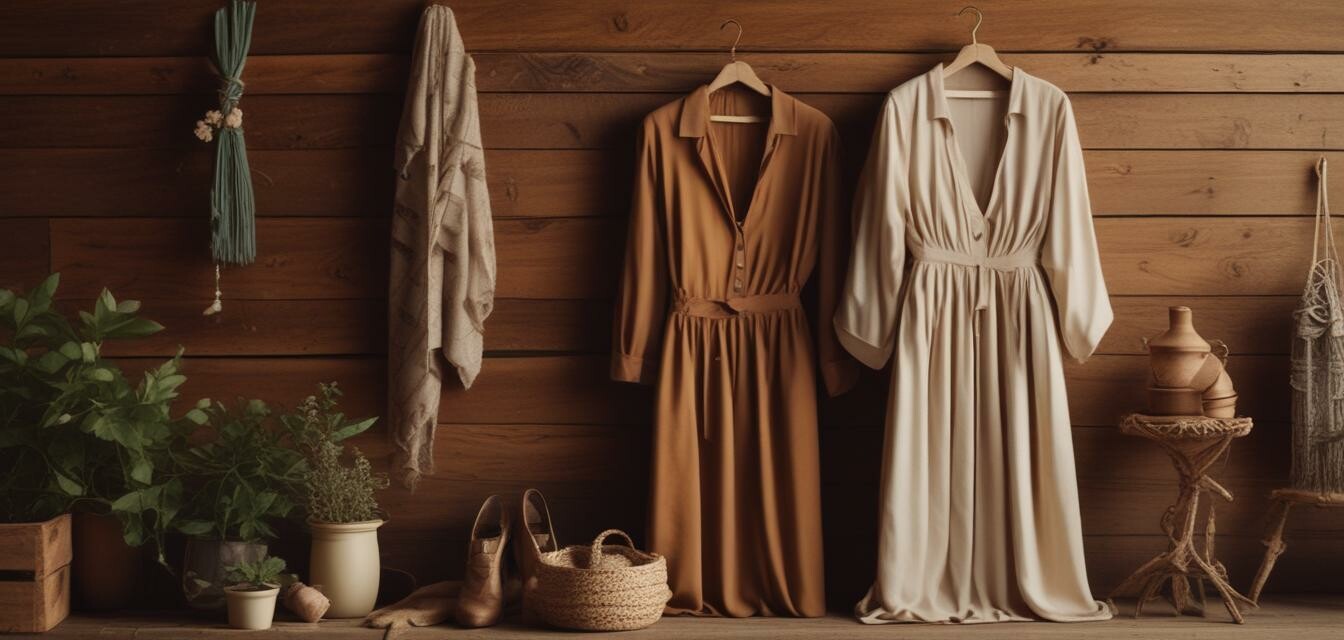
For FTC Disclosure see Footer
Top picks for stylish sustainable fashion essentials
- Choosing sustainable fashion pieces supports eco-friendly practices.
- Look for materials like organic cotton, linen, and Tencel.
- Versatile pieces can be mixed and matched for different occasions.
- Investing in timeless styles can reduce wardrobe waste.
Sustainable fashion is not just a trend; it is a movement towards environmentally responsible clothing that combines style, comfort, and ethical production. If you're looking to revamp your wardrobe with sustainable fashion essentials, you’re in the right place. This guide will help you discover stylish options that are good for the planet and your wardrobe.
Understanding sustainable fashion
Sustainable fashion focuses on creating clothing that minimizes environmental impact through resource-efficient practices, reduced waste, and the use of eco-friendly materials. By opting for sustainable fashion, you not only help the planet but also embrace styles that adhere to quality craftsmanship.
Why choose sustainable fashion?
- Environmental impact: Sustainable fashion helps reduce pollution, waste, and resource depletion.
- Ethical practices: Many sustainable brands emphasize fair trade, supporting artisan communities.
- Quality over quantity: Sustainable pieces are often made to last, encouraging thoughtful purchasing.
Key materials in sustainable fashion
| Material | Benefits | Common Uses |
|---|---|---|
| Organic Cotton | Grown without harmful chemicals; soft and breathable. | T-shirts, dresses, and basic wear. |
| Linen | Made from the flax plant; biodegradable and durable. | Summer clothing, home items, and accessories. |
| Tencel | Made from sustainable wood sources; moisture-wicking and breathable. | Tops, pants, and activewear. |
| Recycled Polyester | Converts plastic waste into fabric; reduces landfill waste. | Activewear, jackets, and accessories. |
Essential items for a sustainable wardrobe
To create a stylish sustainable wardrobe, consider incorporating the following essential pieces that can easily be styled for various occasions:
Beginner tips for sustainable fashion
- Start with basics: Invest in versatile pieces like T-shirts and jeans.
- Mix and match: Pair unique prints with solid colors for a balanced look.
- Accessorize wisely: Choose chic, eco-friendly accessories to elevate your outfit.
- Opt for layering: Layering can add dimension and also extend your wardrobe choices.
Stylish tops
Look for tops made from organic cotton or Tencel. These materials provide comfort and breathability while being kind to our planet. Styles such as oversized shirts, fitted tees, and flowy blouses can cater to different tastes.
Eco-friendly bottoms
Denim made from recycled plastic or organic cotton shorts are excellent sustainable choices. Whether you prefer skirts, trousers, or shorts, look for options that offer durability and timelessness.
Chic dresses
Dresses are a staple in any wardrobe. You can choose maxi dresses made from natural fabrics or sustainable cocktail dresses that can take you from day to night effortlessly.
Comfortable footwear
Consider footwear brands that use eco-friendly materials or those that follow fair trade practices. Look for classic styles that pair well with various outfits.
Where to buy sustainable fashion
Many brands are now focusing on sustainable clothing. Research and explore brands that reflect your values. You can find a diverse range of sustainable fashion options through:
- Local boutiques that emphasize eco-friendly practices.
- Online stores specializing in sustainable fashion.
- Thrift stores or vintage shops to find unique pieces.
Conclusion
Building a sustainable wardrobe is a thoughtful approach to fashion that benefits both your style and the environment. By choosing stylish sustainable fashion essentials, you not only enhance your daily outfits but also make a positive impact on the planet. Remember, every small change counts!
Pros
- Eco-friendly and sustainable options reduce environmental impact.
- Durability in materials leads to longer-lasting pieces.
- Supports ethical labor practices and fair wages.
Cons
- Some sustainable options can be pricier than fast fashion.
- Limited availability in physical stores.
- Need to research brands to ensure their sustainability claims.
Explore more
If you’re interested in learning more about fashion choices that blend cultural elements or other sustainable trends, visit our Buying Guides for more expert insights.
For a journey through beautiful styles, explore our Modern Kimonos and Sustainable Artisan collections. Elevate your wardrobe with pieces that tell a story and make a positive impact.